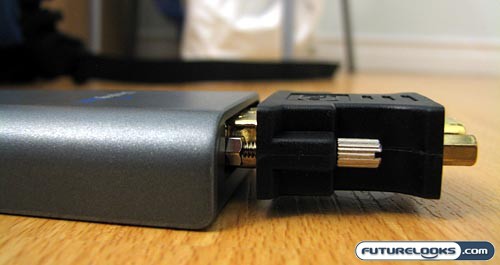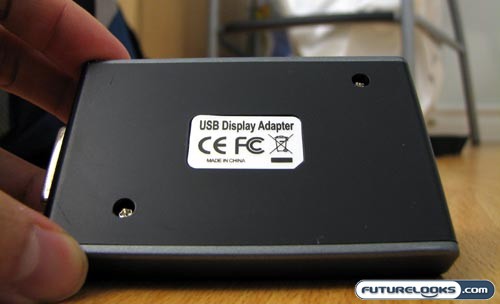Installation and Setup
As with most other USB peripherals, one of the primary goals with the USB-to-DVI adapter from DisplayLink is ease of use. People want a device that is easy to configure, easy to setup, and easy to use. There’s no sense in creating a product like this that requires a complicated installation process; if that were the case, consumers would be more inclined to purchase a decidedly more powerful (and more complex) solution.

Thankfully, the DisplayLink USB-to-DVI adapter is incredibly user friendly. I only ran into one minor snag during the installation process. Using the provided CD-ROM, I installed the required software for the USB adapter to function. This did not autoload, but it was very easy to find the required setup file. The issue came after the installation was complete, because there was confirmation window telling me that it was done. It was only after I plugged in the adapter and connected it to a monitor that I knew it worked.

Beyond the software installation and physical connection (USB to adapter, adapter to monitor), there really was nothing else that I needed to do. Right-clicking on the icon in the service tray opened up a few options, like if I wanted to extend my desktop or clone it, what resolution I wanted, if I wanted any rotation, and so forth. These functions can also be accessed through Windows Display Properties.
Performance
I’m not much of a PC gamer, so I wasn’t able to push the DisplayLink USB-to-DVI adapter to its limits. However, going through the usual activities of surfing the web, editing photos, and watching a few videos on YouTube, I found the performance to be more or less on par with the connection I’d get through my laptop’s integrated VGA-out port. I’d imagine that performance would not be as pleasing with graphically intense games, but that’s already a given when you have INTEL integrated graphics onboard.

The DisplayLink USB-to-DVI adapter is perfectly adequate for the needs of most average consumers, especially if all they need is a little extra workspace for video editing, photo viewing, web surfing, and other “normal” tasks. There are two versions of the adapter available and the only difference, it seems, is the maximum resolution they can output: 1600×1200 and 1280×1024. Even when using the VGA adapter, I was able to output a higher resolution than the built-in VGA port.
Putting the USB Graphics Adapter (UGA) through the benchmarks on PCMark and 3DMark were less than stellar. In fact, PCMark came back with an epic fail and 3DMark wasn’t even able to complete all the tests. If you plan on using this adapter for anything more than generic web surfing and other basic office type tasks, you will probably be disappointed. This is a little frustrating, but that’s the price you pay for USB convenience and easy setup.
Real-Time Price and Stock Check – Shop Like a PRO!
